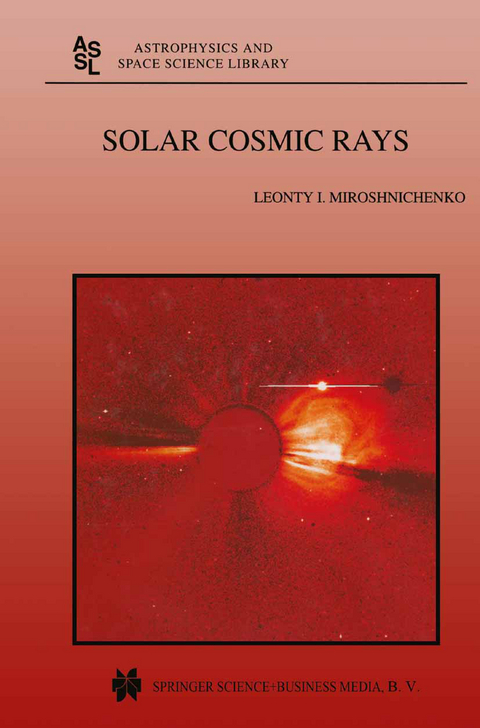
Solar Cosmic Rays
Seiten
2010
|
Softcover reprint of hardcover 1st ed. 2001
Springer (Verlag)
978-90-481-5690-0 (ISBN)
Springer (Verlag)
978-90-481-5690-0 (ISBN)
It turned out to be really a rare and happy occasion that we know exact1y when and how a new branch of space physics was born, namely, a physics of solar cosmic rays. Just due to such a high energy these relativistic particles have been called "solar cosmic rays" (SCR), in distinction from the "true" cosmic rays of galactic origin.
It turned out to be really a rare and happy occasion that we know exact1y when and how a new branch of space physics was born, namely, a physics of solar cosmic rays. It happened on February 28 and March 7, 1942 when the fIrst "cosmic ray bursts" were recorded on the Earth, and the Sun was unambiguously identifIed for the fIrst time as the source of high-velocity 10 particles with energies up to > 10 eV. Just due to such a high energy these relativistic particles have been called "solar cosmic rays" (SCR), in distinction from the "true" cosmic rays of galactic origin. Between 1942 and the beginning ofthe space era in 1957 only extremely high energy solar particle events could be occasionally recorded by cosmic ray ground-Ievel detectors and balloon borne sensors. Since then the detection techniques varied considerably and the study of SCR turned into essential part of solar and solar-terrestrial physics.
It turned out to be really a rare and happy occasion that we know exact1y when and how a new branch of space physics was born, namely, a physics of solar cosmic rays. It happened on February 28 and March 7, 1942 when the fIrst "cosmic ray bursts" were recorded on the Earth, and the Sun was unambiguously identifIed for the fIrst time as the source of high-velocity 10 particles with energies up to > 10 eV. Just due to such a high energy these relativistic particles have been called "solar cosmic rays" (SCR), in distinction from the "true" cosmic rays of galactic origin. Between 1942 and the beginning ofthe space era in 1957 only extremely high energy solar particle events could be occasionally recorded by cosmic ray ground-Ievel detectors and balloon borne sensors. Since then the detection techniques varied considerably and the study of SCR turned into essential part of solar and solar-terrestrial physics.
1 Solar Cosmic Rays — Object and Tool for Space Research.- 2 Observational Features and Databases of Solar Cosmic Rays.- 3 Energetic Particles and High-Energy Solar Phenomena.- 4 Solar Cosmic Rays at High Energies.- 5 Particle Acceleration at the Sun.- 6 Interactions of Accelerated Particles with the Solar Atmosphere.- 7 Acceleration and Release of Particles from the Corona.- 8 Solar Cosmic Rays in the Interplanetary Space.- 9 Spectrum of Solar Cosmic Rays Near the Earth.- 10 Solar Cosmic Rays in the Geosphere.- 11 Energetic Solar Particles and Radiation Hazard in Space.- 12 Summary and Conclusions: Problems and Prospects.- Figure Captions.
| Erscheint lt. Verlag | 6.12.2010 |
|---|---|
| Reihe/Serie | Astrophysics and Space Science Library ; 260 |
| Zusatzinfo | XI, 480 p. |
| Verlagsort | Dordrecht |
| Sprache | englisch |
| Maße | 160 x 240 mm |
| Themenwelt | Naturwissenschaften ► Geowissenschaften ► Geologie |
| Naturwissenschaften ► Physik / Astronomie ► Astronomie / Astrophysik | |
| Technik ► Fahrzeugbau / Schiffbau | |
| ISBN-10 | 90-481-5690-4 / 9048156904 |
| ISBN-13 | 978-90-481-5690-0 / 9789048156900 |
| Zustand | Neuware |
| Haben Sie eine Frage zum Produkt? |
Mehr entdecken
aus dem Bereich
aus dem Bereich


